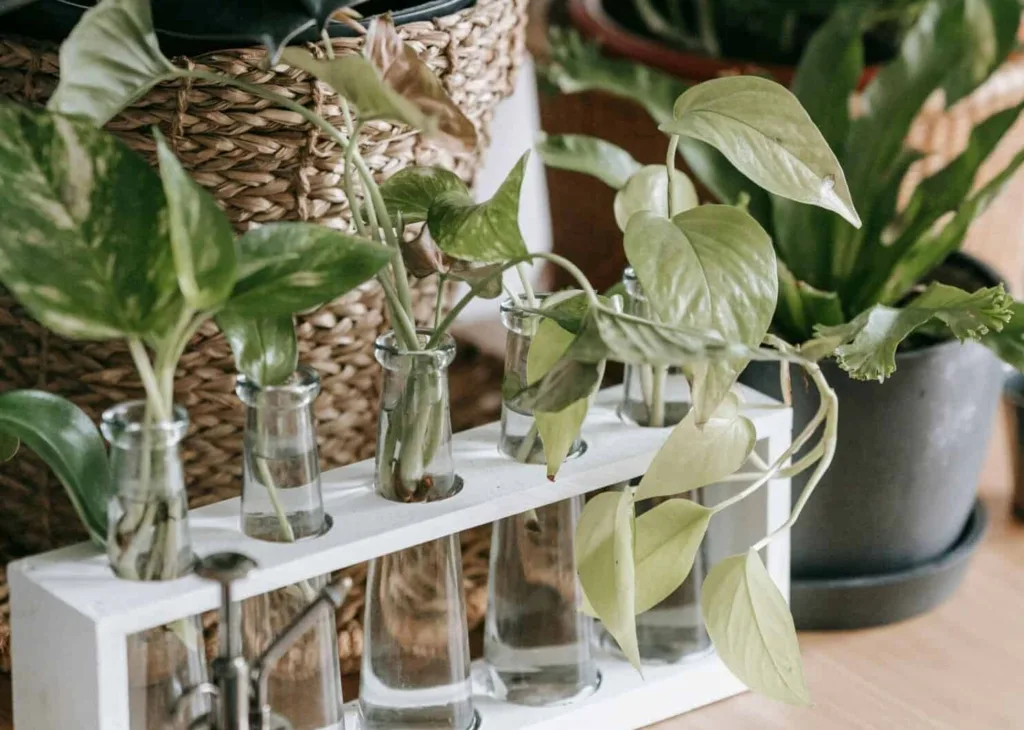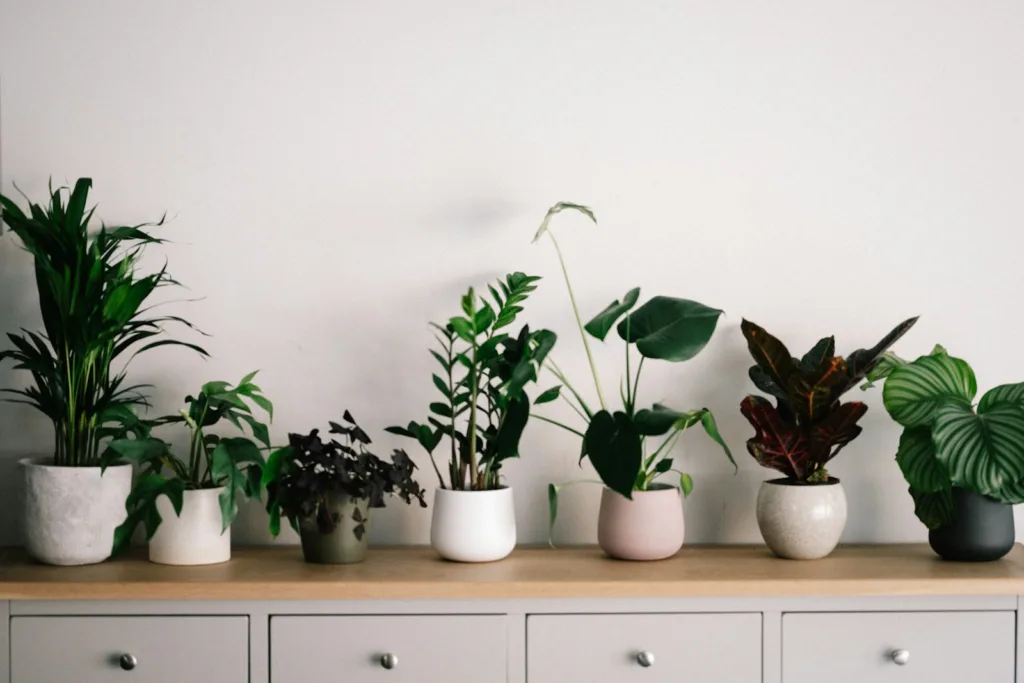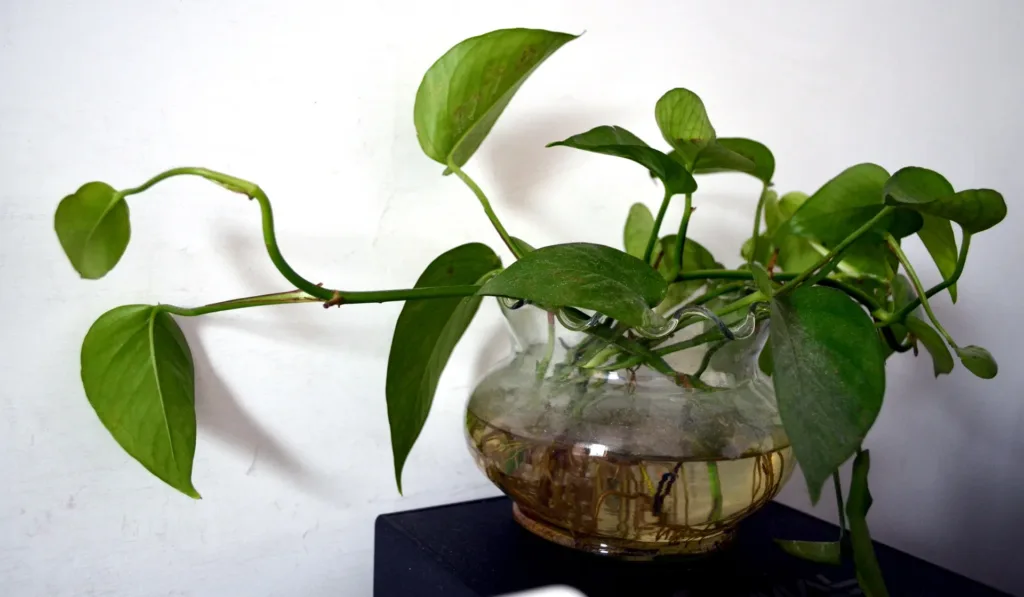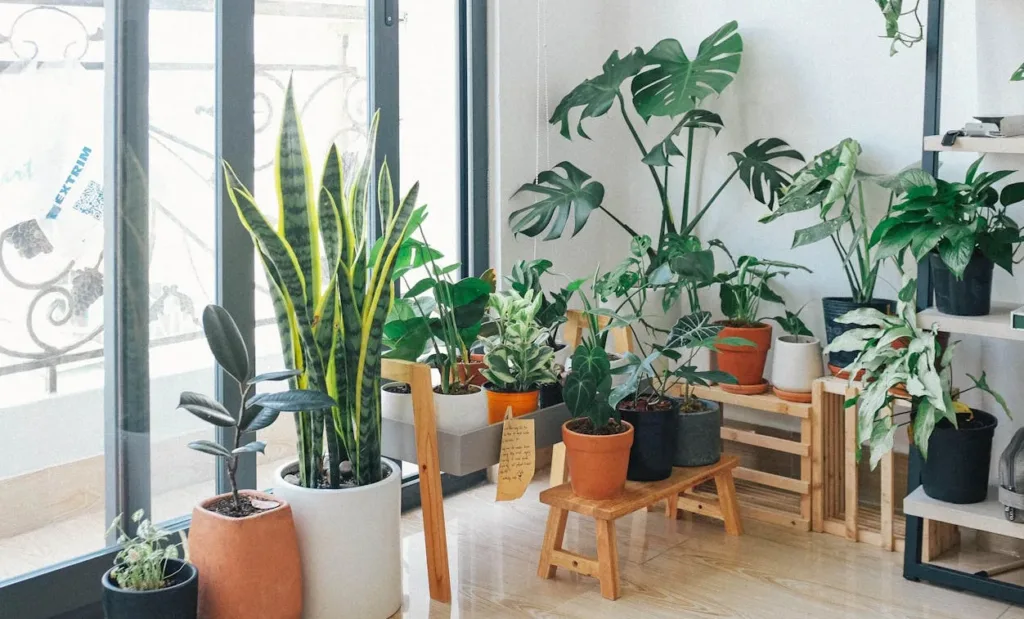Welcome to the ultimate Pothos care guide! No worries if you’re a beginner or an experienced plant parent, this guide will cover everything you need to know for keeping your Pothos thriving.
We’ll start by exploring different types of Pothos, then the six essentials of Pothos care, common issues, FAQs, and expert tips. By the end, you’ll have a complete understanding of how to care for Pothos like a pro!
If you want to skip directly to a specific section, use the jump links below. Let’s dive in!
Jump links/Content table
Types of some popular pothos
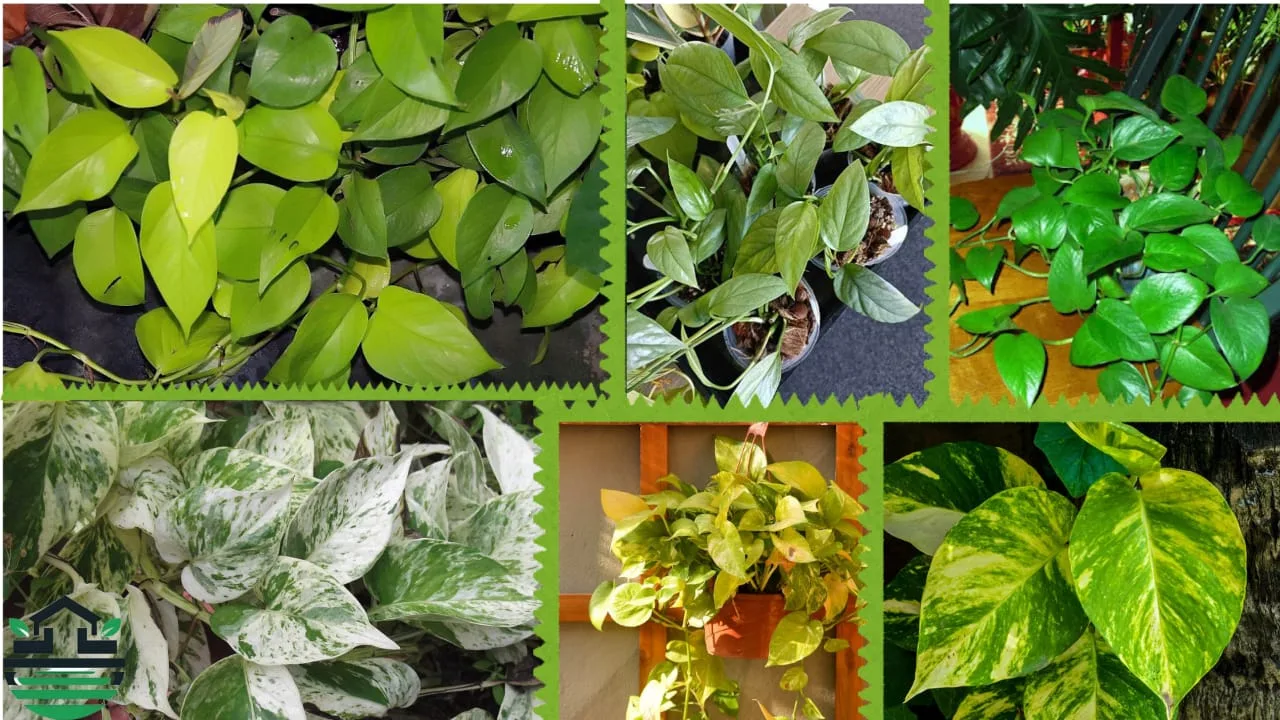
Pothos comes in several varieties, each with unique leaf patterns and growth habits. The most common type is Golden Pothos, with heart-shaped green leaves splashed with golden-yellow variegation. Marble Queen Pothos has a stunning white and green marbled pattern, while Neon Pothos stands out with its bright lime-green foliage. Jade Pothos is a solid green variety, perfect for low-light conditions.
Other rare varieties include Cebu Blue Pothos, with silvery-blue elongated leaves, and Manjula Pothos, which has wavy leaves with white, green, and cream variegation. Snow Queen Pothos looks similar to Marble Queen but with more white. Though not a true Pothos, Satin Pothos (Scindapsus pictus) is often grouped with them due to its similar trailing growth habit and care needs.
If you are interested check it out –
How to Care for Pothos
Pothos is a low-maintenance plant, but you should ensure proper care for vibrant growth. The right balance of light, water, and nutrients can make a huge difference in its health and appearance.
Light Requirements
Pothos thrives in bright, indirect light, but they can also tolerate low-light conditions. If placed in low light for too long, variegated varieties may lose their color and revert to solid green. Too much direct sunlight can scorch the leaves, causing brown spots or faded colors. A north or east facing window is ideal, but if you have only south or west facing windows, use sheer curtains to filter the light. Only keep in mind – bright but indirect light
Watering Needs
One of the biggest mistakes plant owners make is overwatering Pothos. Water only again, only when the top 1-2 inches of soil feel dry. Typically, this means watering once a week in summer and every 10-14 days in winter. As your areas weather. Drooping leaves can indicate both underwatering and overwatering, so check the soil before watering. If leaves turn yellow and feel mushy, it’s a sign of overwatering and potential root rot.
However don’t think this way that “Hey author pothos can grow in water, only in water so why it can’t tolerate high water ?”
Let me explain -“Pothos develops water roots in water, which absorb oxygen directly. In soil, excess water blocks air pockets, suffocating roots and causing root rot due to fungi.” Hope you understood.
Humidity and Temperature
Pothos prefers humidity levels between 40-60%, but it can tolerate normal indoor conditions. If your home is very dry, consider misting the plant occasionally or placing a humidity tray nearby. Ideal temperatures range from 60-85°F (16-29°C). Avoid placing Pothos near air conditioners, heaters, or drafty windows, as sudden temperature changes can stress the plant. As it’s not a big matter, humidity and temperature don’t play a huge role in their health and growth. So, don’t worry much.
Soil and Potting Mix
A well-draining potting mix is crucial for Pothos. A mix of potting soil, perlite, and peat moss works best. Avoid dense or clay-heavy soil, as it retains too much moisture, leading to root rot. Pothos thrives in pots with drainage holes to prevent water from sitting at the bottom. Repot every 1-2 years or when you see roots growing out of the drainage holes.
Fertilizing Schedule
Pothos doesn’t need frequent fertilization .You can skip fertilizing, but occasional feeding helps to promote lush growth. Use a balanced liquid fertilizer (10-10-10 or 20-20-20) once a month during spring and summer. Reduce feeding in fall and winter when growth slows down. Avoid over-fertilizing, as it can cause brown leaf tips.
Pruning tips for pothos
Pruning keeps Pothos bushy and prevents leggy growth. Trim long vines using clean scissors, cutting just above a node (the small bump where leaves grow). Regular pruning encourages new growth and makes the plant look fuller.
Propagation tips
Pothos is one of the easiest plants to propagate. Simply cut a stem with at least two nodes and place it in water. Change the water every few days, and roots should appear within 2-4 weeks. Once the roots are a few inches long, transfer the cutting to soil and all done your plant is ready . 🌿
Common Problems and Solutions
Even though Pothos is a hardy plant, it can still face some issues. Here’s how to fix them:
Yellow Leaves – Overwatering is the most common cause. Let the soil dry out before watering again. If lower leaves turn yellow, it may be natural aging.
Brown Tips – Low humidity or excess fertilizer can cause browning at the edges. Trim affected leaves and adjust watering and humidity levels.
Leggy Growth – If your Pothos has long stems with few leaves, it’s not getting enough light. Move it to a brighter spot and prune regularly to encourage new growth.
Pests and Diseases – Mealybugs and spider mites are common pests. Wipe leaves with a damp cloth and treat infestations with insecticidal soap or neem oil. Root rot occurs if the soil stays wet for too long, so always ensure proper drainage.
Decorating with Pothos
Pothos is not just a low-maintenance plant; it’s also an excellent decorative element. Its trailing vines look stunning in hanging baskets, allowing the leaves to cascade naturally. You can place it on shelves, bookcases, or high cabinets, letting the vines grow downward for a dramatic effect. Pothos can also be trained to climb a moss pole or trellis, creating a vertical garden look.
It pairs well with other houseplants like Snake Plants, ZZ Plants, and Peace Lilies, creating an attractive indoor jungle. Since it thrives in low light, it’s ideal for offices, bathrooms, and bedrooms.
Some FAQs
Can Pothos grow in low light?

Yes, Pothos can survive in low light, but variegated varieties may lose their patterns and turn green. For healthier growth, place it in bright, indirect light.
How often should I water my Pothos?
Water when the top 1-2 inches of soil feel dry, typically once a week in warmer months and every 10-14 days in winter. Always check the soil before watering to avoid overwatering.
Why are my Pothos leaves turning yellow?
Overwatering is the most common cause. Ensure the pot has drainage holes, let the soil dry between waterings, and remove any rotting roots if needed.
Can I grow Pothos in water permanently?

Yes! Pothos thrives in water as long as you change the water every 1-2 weeks and add a diluted liquid fertilizer monthly to provide nutrients.
Is Pothos toxic to pets?
Yes, Pothos is toxic to cats and dogs due to calcium oxalate crystals, which can cause mouth irritation, drooling, and vomiting if ingested. Keep it out of reach of pets.
Why is my Pothos growing long vines with few leaves?
This happens when the plant isn’t getting enough light. Move it to a brighter spot and prune leggy vines to encourage fuller, leafier growth.
Conclusion
Pothos is one of the easiest houseplants to grow, making it perfect for beginners and seasoned plant lovers alike. With minimal effort, you can enjoy its lush foliage and air-purifying benefits. By providing the right light, watering schedule, and occasional pruning, your Pothos will thrive for years. Whether placed in a hanging basket, on a shelf, or in a decorative pot, this versatile plant enhances any indoor space.
If you found this guide helpful, share it with fellow plant enthusiasts and start growing your own beautiful Pothos today!







